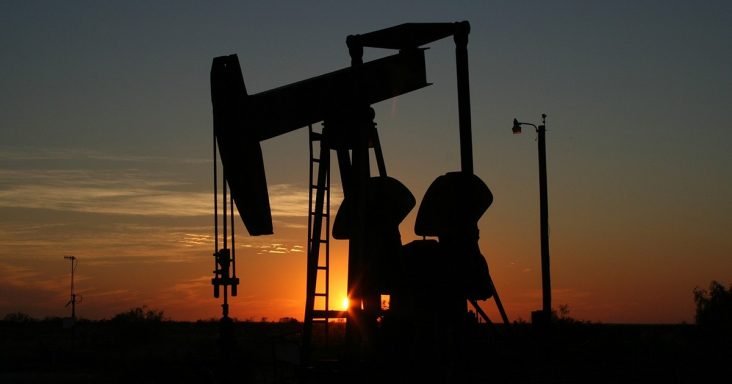Crude oil producers to continue drilling wells amid favorable WTI prices
by May 11, 2021 1:35 pm 965 views

U.S. crude oil producers are expected to continue to drill wells as West Texas Intermediate (WTI) crude oil prices remain at more than $55 per barrel, according to the U.S. Energy Information Administration (EIA). New well production will offset declines at existing wells in the coming months.
The EIA released Tuesday (May 11) the Short-Term Energy Outlook for May that noted its modeling and analysis was completed before the temporary closure of the Colonial Pipeline on May 7 as a result of a cyberattack. The EIA, however, is following supply and price developments related to the outage.
According to IHS Markit forecasts, U.S. GDP is projected to rise by 6.2% in 2021 and by 4.3% in 2022. A rise in economic activity and reduction of COVID-19-related restrictions have contributed to increased energy use, and this is expected to continue.
EIA Acting Administrator Steve Nalley expects U.S. electricity consumption to rise by 1.5% this summer, from last summer. He also expects electricity prices to rise this summer. The increase is expected to be offset by cooler-than-average summer weather and more people returning to offices. As a result, household electricity bills should be similar to the bills last summer, he added. Between June and August, the average household is expected to spend $446 on electricity.
“Increased electricity use will be most notable in hotels, restaurants and other businesses that faced major hurdles in 2020 due to stay-at-home orders,” Nalley said.
International benchmark Brent crude oil spot prices are expected to average $65 per barrel in the second quarter of 2021 and $61 per barrel in the second half of 2021 and in 2022. Global consumption of petroleum and liquid fuels is projected to average 97.7 million barrels per day for 2021, up 5.4 million barrels per day from 2020. The consumption is projected to rise by 3.7 million barrels per day to an average of 101.4 million barrels per day in 2022.
U.S. gasoline consumption is expected to rise by 1.2 million barrels per day to nearly 900,000 barrels per day this summer, from last summer. The consumption level is expected to be down by nearly 600,000 barrels per day from summer 2019. For 2021, the consumption will be an average of 8.7 million barrels per day, up from 8 million barrels per day in 2020 but down from 9.3 million barrels per day in 2019.
U.S. crude oil production is expected to average 11.3 million barrels per day in the fourth quarter of 2021 and rise to an average of 11.8 million barrels per day in 2022. The production rise can be attributed to new wells being drilled, including new projects in the Federal Offshore Gulf of Mexico.
NATURAL GAS
The Henry Hub spot price is expected to average $2.78 per million British thermal units in the second quarter of 2021 and $3.05 per million British thermal units for 2021, up from $2.03 per million British thermal units in 2020. The price increase this year can be attributed to growth in liquefied natural gas (LNG) exports and rising domestic natural gas consumption. In 2022, the Henry Hub price is expected to fall to an average of $3.02 per million British thermal units amid slowing growth in LNG exports and rising production. LNG exports are expected to be flat at 9.2 billion cubic feet per day in 2021 and 2022, up from 6.5 billion cubic feet per day in 2020.
U.S. consumption of natural gas is expected to fall by 0.7% to an average of 82.6 billion cubic feet per day in 2021, from 2020. The decline is, in part, because of electric power generators switching to coal from natural gas as a result of rising natural gas prices. Natural gas consumption is expected to average 82.5 billion cubic feet per day in 2022.
Natural gas inventories are expected to reach more than 3.6 trillion cubic feet at the end of October, which is 3% below the five-year average. U.S. production of dry natural gas is expected to average 91.1 billion cubic feet per day in 2021, down 0.3% from 2020. The production is expected to rise to 93.1 billion cubic feet per day in 2022. The rise is a result of higher projected prices for natural gas and crude oil compared with 2020.
ELECTRICITY GENERATION
This summer, electricity generation from natural gas is expected to fall by 12%. Meanwhile, the generation from renewable sources will rise by 21%, and the generation from coal will increase by 18%.
“We expect coal’s use in U.S. electricity generation to rise to meet increased electricity demand this summer as coal displaces more expensive natural gas,” Nalley said. “We believe that coal’s share of U.S. electricity generation is likely to increase from 22% in 2020 to 26% in the summer of 2021.”
The share of electricity generated by natural gas is expected to be 35% in 2021 and 2022, down from 39% in 2020. Coal’s share will rise from 20% in 2020 to 24% in 2021 and 23% in 2022. Renewable’s share will rise from 20% in 2020 to 21% in 2021 and 22% in 2022. Nuclear’s share will fall from 21% in 2020 to 20% in 2021 and 19% in 2022.
In 2021, U.S. electricity consumption is expected to rise by 2.2% after falling 3.9% in 2020. For 2022, consumption is expected to rise by 1%.
